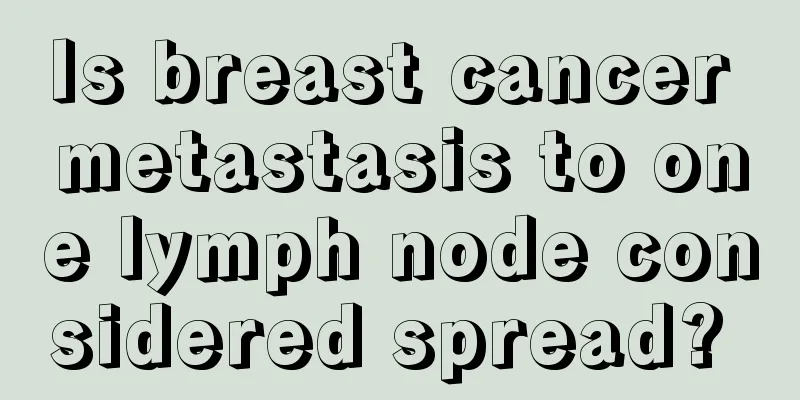Red spots on arms, no pain, no itching

|
Skin diseases always attract so much attention. Skin problems have always been a concern for everyone. Some people often have many red spots on their skin. These red spots are of different sizes and are relatively obvious. They also cause itching and pain. However, some skin diseases do not cause pain and itching. This may be due to minor skin diseases and needs to be treated after the cause is found out. Red spots appear on the skin and are often very noticeable. These red dots have different properties, so be careful to distinguish them. The most common red dots are red moles that are as small as a needle tip or as large as a sesame seed, and are slightly raised above the skin surface. In fact, red moles, like black moles, have no effect on health. Unless there are recent and obvious changes, no treatment is usually needed. There is a type of nevus whose central part is slightly higher than the skin surface and has many capillaries extending outward around it. It is called a spider nevus. It is mainly seen in patients with cirrhosis and treatment should be targeted at the cause. Another type of red spots on the skin are manifestations of subcutaneous bleeding, which are bright red at first, gradually turn purple after two or three days, and then turn yellowish brown, and eventually disappear without leaving any trace. Subcutaneous bleeding as thin as a needle tip is called petechiae. Larger ones are called purpura. Those with a diameter of more than 0.5 cm are called ecchymosis, commonly known as black and blue lumps. Petechiae are sometimes seen in some acute infectious diseases, such as epidemic meningitis and some serious bacterial infections, such as sepsis and subacute bacterial endocarditis. In addition, the causes of subcutaneous bleeding can be attributed to two factors: vascular factors and platelet factors. Subcutaneous bleeding caused by vascular factors, in addition to vascular damage, is mainly caused by allergies, which is medically known as allergic purpura. Some people are allergic to the protein in foods such as fish, shrimp, milk, and eggs; bacteria, viruses, and parasitic infections can also cause allergies; certain drugs, pollen, and even cold stimulation can also cause the body to be allergic, causing the subcutaneous capillaries to dilate, the permeability of the blood vessel walls to increase, and some blood components to seep out and cause subcutaneous bleeding. Allergic purpura is mainly seen on the limbs and buttocks, often on the left and right sides of the body, distributed symmetrically, and appear repeatedly in batches. There may be an itchy sensation in the area where purpura appears. Henoch-Schonlein purpura can also cause intra-articular bleeding and gastrointestinal bleeding. Occasionally, nephritis may also occur. Patients with Henoch-Schonlein purpura should find out what substances they are allergic to and avoid contact with such substances. Drugs such as finagel, vitamin C, and calcium gluconate have a therapeutic effect on this type of purpura. Severe cases can be treated with corticosteroids. Elderly people may also develop purpura due to loose subcutaneous tissue and increased capillary permeability, which is called senile purpura. Some young women also develop bruises on their skin very easily, a condition called purpura simplex. The cause of the disease is not very clear at present. This type of situation can be treated with vitamin C and other drugs. Purpura caused by platelet factors is naturally characterized by thrombocytopenia. Thrombocytopenia can be seen in diseases such as aplastic anemia, leukemia, hypersplenism, and uremia, and its treatment should certainly focus on treating these diseases. Idiopathic thrombocytopenic purpura is currently considered an autoimmune disease because these patients often have antibodies against their own platelets in their bodies. These antibodies destroy their own platelets and cause bleeding. This disease is common in young women and tends to recur. Mild symptoms include subcutaneous bleeding, while severe symptoms may include internal bleeding. Idiopathic thrombocytopenic purpura can also be treated with anti-allergic drugs. Other Chinese and Western medicines such as coenzyme A and buffalo horn powder have certain therapeutic effects. Severe cases can be treated with corticosteroids. Extensive bleeding may require platelet transfusion. |
<<: My arm itches and the more I scratch it the more it itches
>>: Folk remedies for itchy eyes
Recommend
Is glioma genetically selective?
Glioma is the most common primary brain tumor cau...
The function of protein skimmer
Protein skimmers are commonly found in fish farms...
Things to note when washing teeth
In recent years, more and more people have paid a...
Causes of itchy palate due to allergic rhinitis
Anyone who has had allergic rhinitis knows that t...
What are the main adverse symptoms of early bile duct cancer
Friends need to pay attention to changes in their...
Eating biscuits and cakes often can cause uterine cancer. Can uterine cancer be prevented?
Most women love to eat sweets, and some female di...
The cause of prostate cancer is related to the aging of the population. Be vigilant about seven cancer factors
In my country, the number of men suffering from p...
Ways to prevent cervical precancerous lesions Staying away from these high-risk factors can easily prevent cervical cancer
There is a kind of cancer that can be completely ...
What are the symptoms of late stage nasopharyngeal carcinoma
The incidence of nasopharyngeal carcinoma remains...
What is lead and mercury
Both lead and mercury are chemical agents that ar...
How to diagnose small cell lung cancer
Small cell lung cancer can be diagnosed through c...
What are the three major factors that are most likely to induce liver cancer?
Liver cancer is a very common disease nowadays. T...
Is it good to wear a corset when exercising?
In addition to actively developing good living an...
What happens if I have a fever after getting the MMR vaccine?
Vaccines are highly recommended in modern medicin...
It turns out that the low mean corpuscular hemoglobin concentration is caused by these factors
Blood test is a test we do frequently, whether it...









